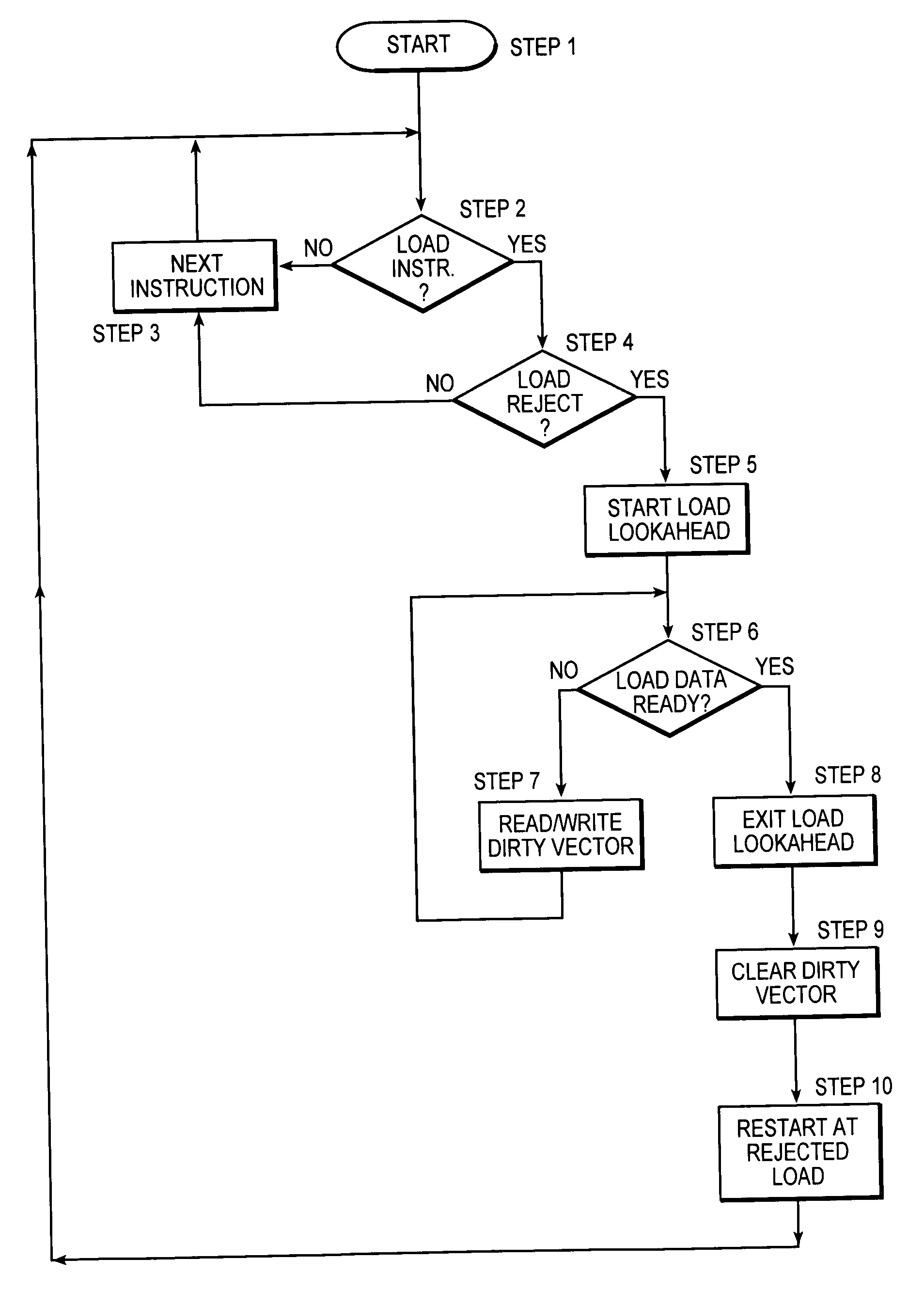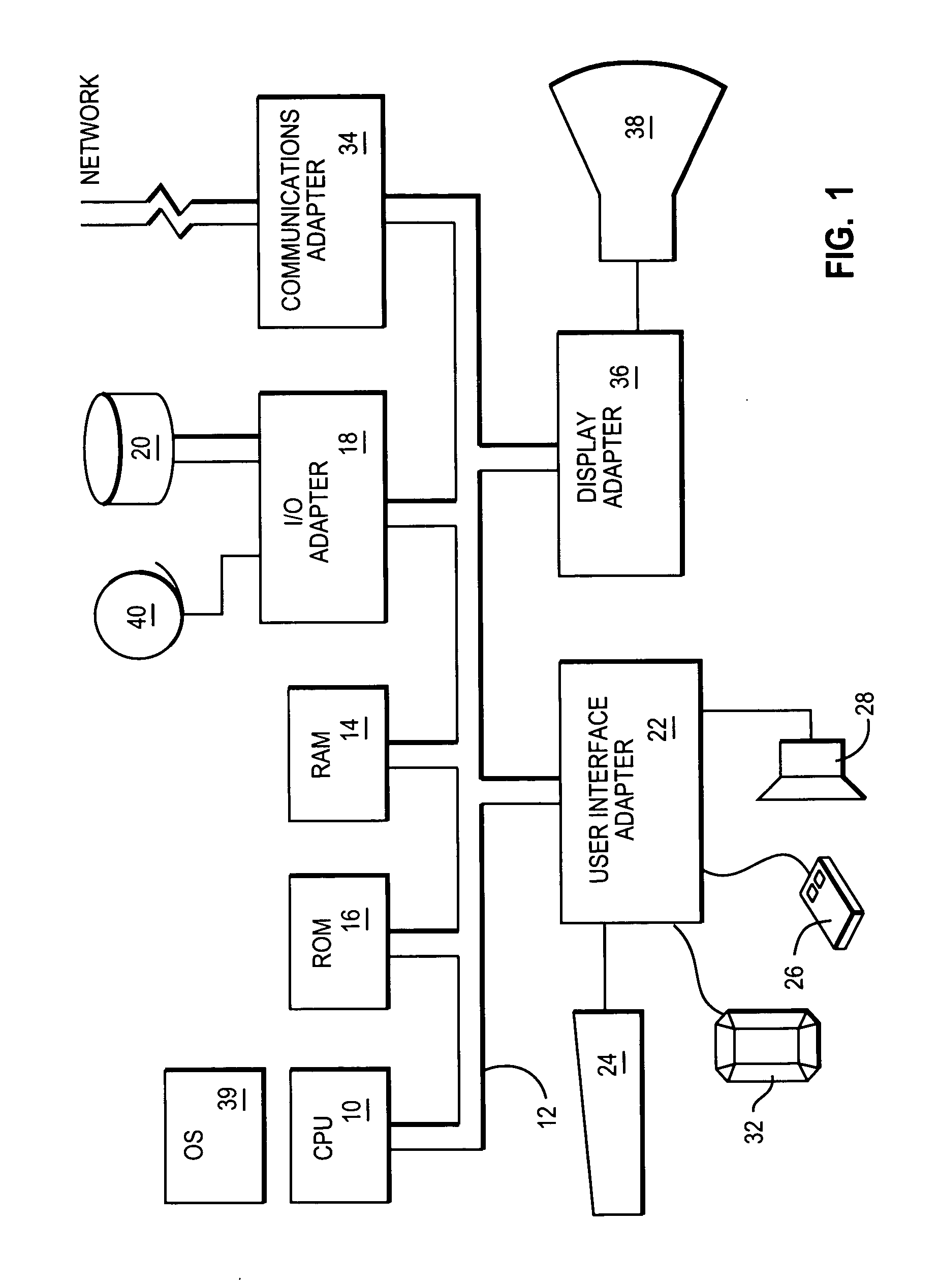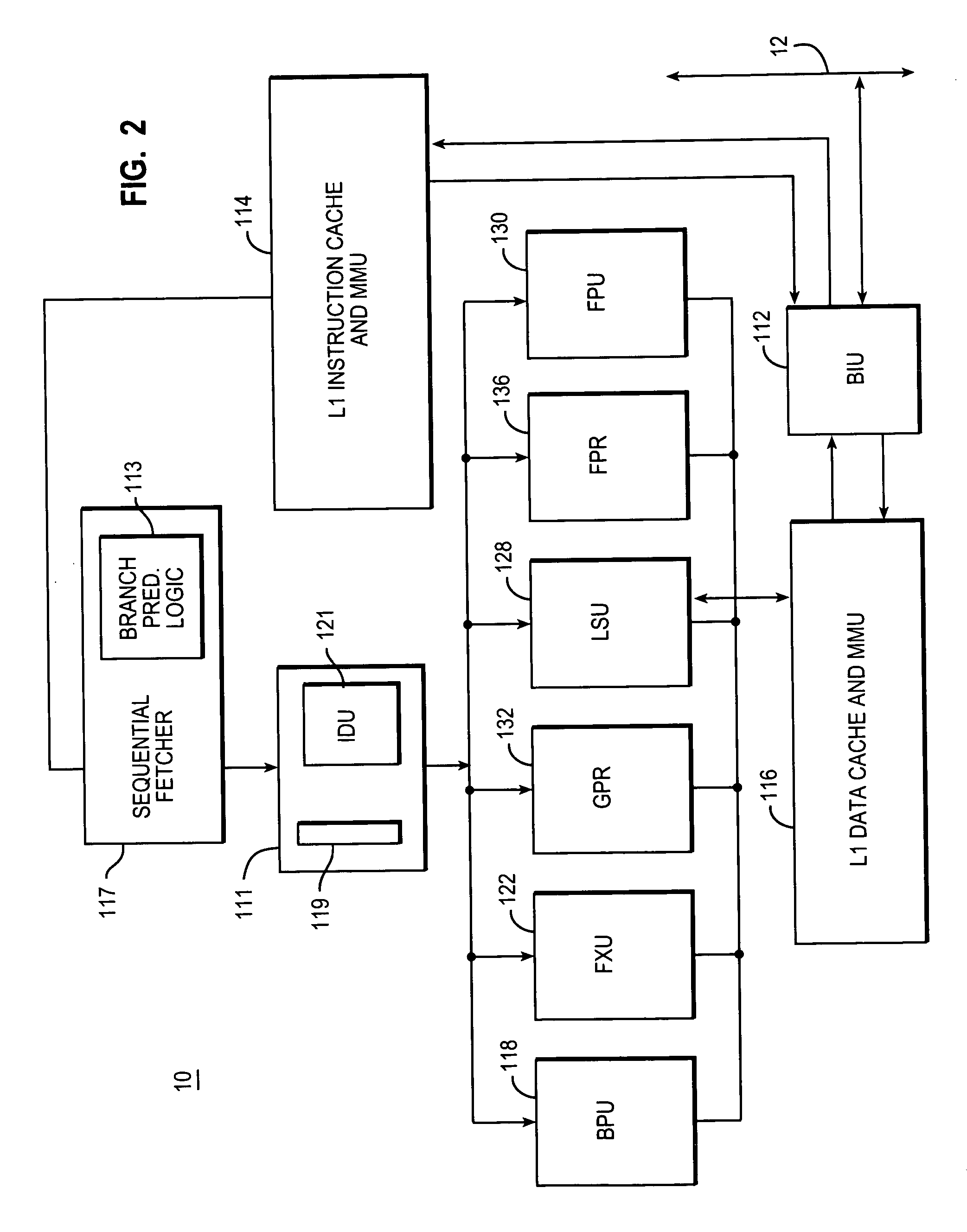Load lookahead prefetch for microprocessors
a microprocessor and load lookahead technology, applied in the direction of instruments, program control, computation using denominational number representation, etc., can solve the problems of inability to write back for certain architected facilities, negative performance impact, and instructions that may produce invalid, so as to reduce the performance impact of pipeline stalling
- Summary
- Abstract
- Description
- Claims
- Application Information
AI Technical Summary
Benefits of technology
Problems solved by technology
Method used
Image
Examples
Embodiment Construction
[0032] Referring to FIG. 1, a typical data processing system is shown which may be used in conjunction with the present invention. A central processing unit (CPU) 10 may include a PowerPC microprocessor, commercially available from the IBM Corporation or a Pentium class microprocessor, available from Intel Corporation interconnected to the various other system components by a system bus 12. Read only memory (ROM) 16 is connected to CPU or microprocessor 10, via bus 12 and includes the basic input / output system (BIOS) that controls the basic computer functions. Random access memory (RAM) 14, I / O adapter 18 and communication adapter 34 are also connected to system bus 12. RAM 14, or main memory, along with a level 1 (L1) and level 2 and level 3 (L2 and L3) caches (if provided) will generally make up the memory hierarchy of the data processing system. Data can be loaded from the larger, slower main memory to the relatively smaller, faster cache memories in order to make it more readily...
PUM
 Login to View More
Login to View More Abstract
Description
Claims
Application Information
 Login to View More
Login to View More - R&D
- Intellectual Property
- Life Sciences
- Materials
- Tech Scout
- Unparalleled Data Quality
- Higher Quality Content
- 60% Fewer Hallucinations
Browse by: Latest US Patents, China's latest patents, Technical Efficacy Thesaurus, Application Domain, Technology Topic, Popular Technical Reports.
© 2025 PatSnap. All rights reserved.Legal|Privacy policy|Modern Slavery Act Transparency Statement|Sitemap|About US| Contact US: help@patsnap.com



